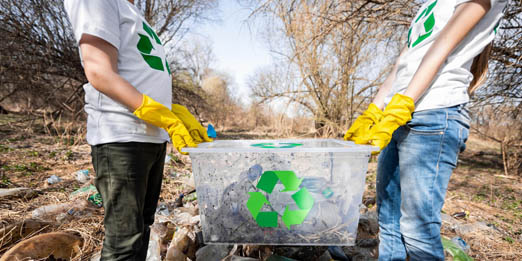


During the last four decades the Industrial sector has quadrupled in size resulting in increased volume of emissions and discharges, generation of solid wastes both hazardous and non-hazardous. While much effort has been made to arrest the rate of emissions and treatment of effluents due to ready availability of technology and expertise, much needs to be done in the area of hazardous waste storage, treatment and disposal. The costs associated with improper disposal of hazardous wastes include; costs due to impact on health, economy and cost associated with restoration of the degraded environment. Adverse effects on the eco-system results due to improper disposal or dumping of hazardous wastes, when discharged on land, heavy metals and certain organic compounds are phyto-toxic at low concentration, adversely affecting the soil productivity. Exposure to hazardous wastes by direct contact from land, surface water and ground water can lead to diseases or chemical poisoning and in some cases death.
Recognizing, the need for environmentally sound management of the hazardous wastes, Government of India, Ministry of Environment and Forests (MoEF) has framed ‘Hazardous Wastes (Management and Handling) Rules, 1989’, and later transformed the same into ‘Hazardous Waste (Management, Handling & Trans-boundary Movement) Rules, 2008 as under Environment (Protection) Act, 1986. This law mandate industry to undertake proper management and set up disposal facilities for hazardous wastes. MoEF has identified 36 categories of processes and related waste streams that generate Hazardous Wastes. HEMS encourages its members to review this listing and identify, if any, hazardous waste is generated at their site. Proper implementation of these rules will require identification, characterisation, inventorisation and monitoring of such hazardous wastes at the individual Industry Level.
One of the biggest environmental challenges faced by the State of Haryana and NCR was, very much similar to other Indian States, to ensure proper management of growing volumes of hazardous wastes generated, including its safe treatment and disposal. Industry was experiencing difficulties in complying with the legal requirements due to the lack of techno-economically viable Treatment Storage and Disposal Facilities (TSDF). Few industries have developed their treatment and storage facilities for captive use but this is not a sustainable solution for long term. HEMS recognized the problems associated with the safe treatment and disposal of hazardous wastes and has resolved to solve the environment problems by facilitation of development of a common TSDF facility for hazardous waste generated in the region. HEMS in co-operation and guidance from the experts from Ministry of Environment & Forests, New Delhi, Central Pollution Control Board, Haryana State Pollution Control Board and neighbouring State Pollution Control Board/Committees and financial assistance from Ministry of Commerce, GOI planned and developed Integrated Common Hazardous Waste Treatment Storage and Disposal Facility (ICHWTSDF) at Village Pali, District Faridabad and got commissioned the same in 2009.